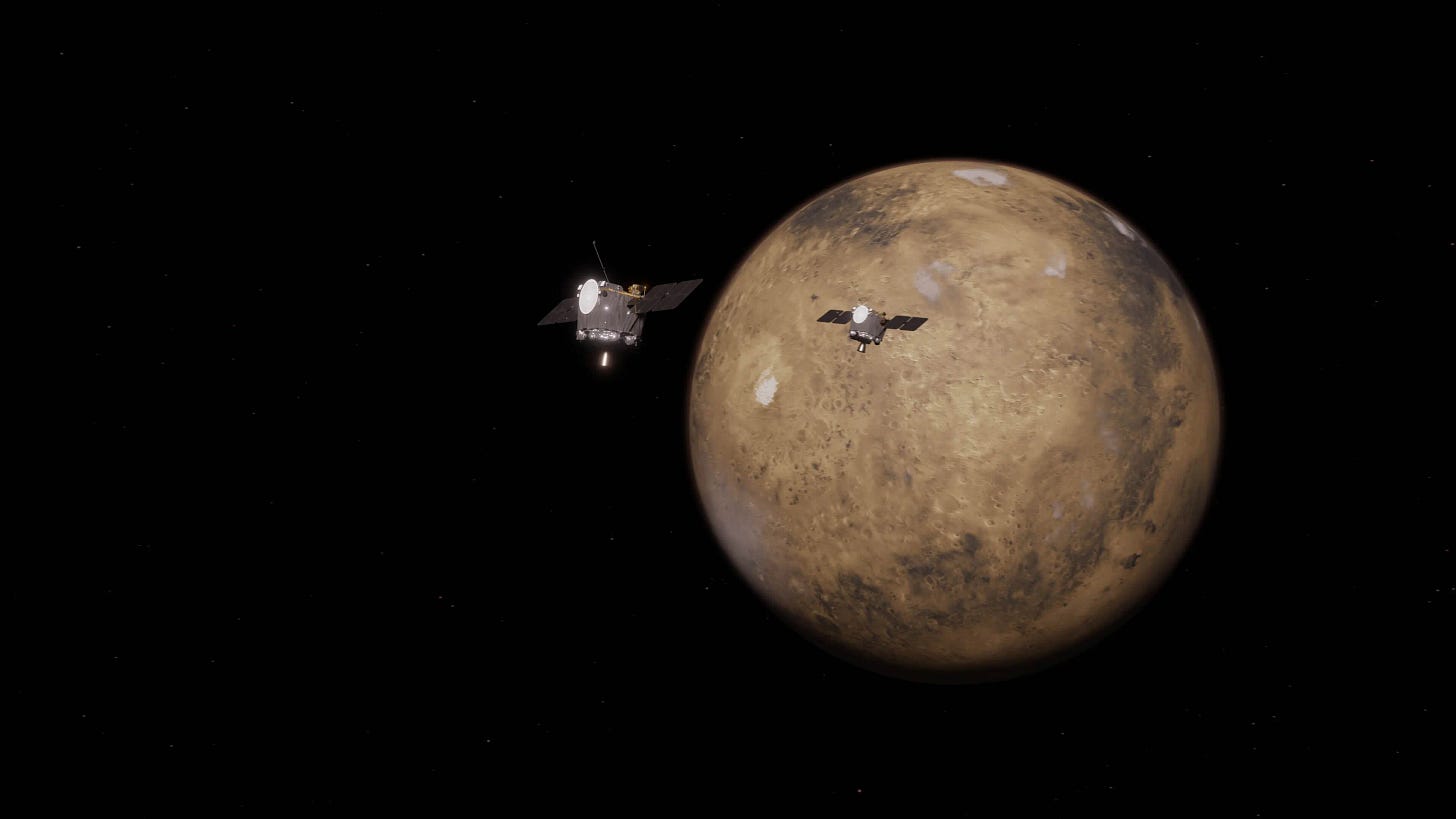Weekly - CME detected on another star for the first time and more
🟢 Weekly Space News - Quick and Easy.
Our Engagement Palette!
Check out our colour-coded system for our weekly space news:
🟤 Brown: For weeks that are mundane and bland.
🟡 Yellow: For fairly interesting weeks.
🟢 Green: For the most exciting weeks.
This Palette will help you decide if this week’s news is worth your time!
This week ranks green 🟢 on the Engagement Palette.
ESCAPADE mission launched to study Mars
Last week, NASA’s ESCAPADE (Escape and Plasma Acceleration and Dynamics Explorers) spacecraft was launched on its path to Mars by a Blue Origin New Glenn rocket. The mission consists of two spacecraft that will orbit the red planet and study the effect of solar eruptions on Mars’ surface. It will also provide valuable data for future missions.
Chandrayaan-3 propulsion module re-enters moon’s influence
The main function of Chandrayaan-3’s propulsion module was to carry the lander to lunar orbit. After completing its main objective, it still had fuel left, so the SHAPE payload was activated and the module was moved to Earth orbit to observe the Earth. Even though the module orbits Earth, its orbit is so large that it crosses the Moon’s path. Recently, it got close enough to enter the Moon’s gravitational influence again as planned. This kind of event is very rare.
CME detected on another star for the first time
Coronal Mass Ejections (CMEs) are large bursts of magnetised plasma from a star. While it is fairly common and well detected from our Sun, it had never been detected on another star until recently. Scientists analysing data from a European network of telescopes called LOFAR, found a CME had been detected from a red dwarf star called StKM 1-1262 in 2016. While there have been signs of CMEs on other stars, this is the first one to be definitively detected.




